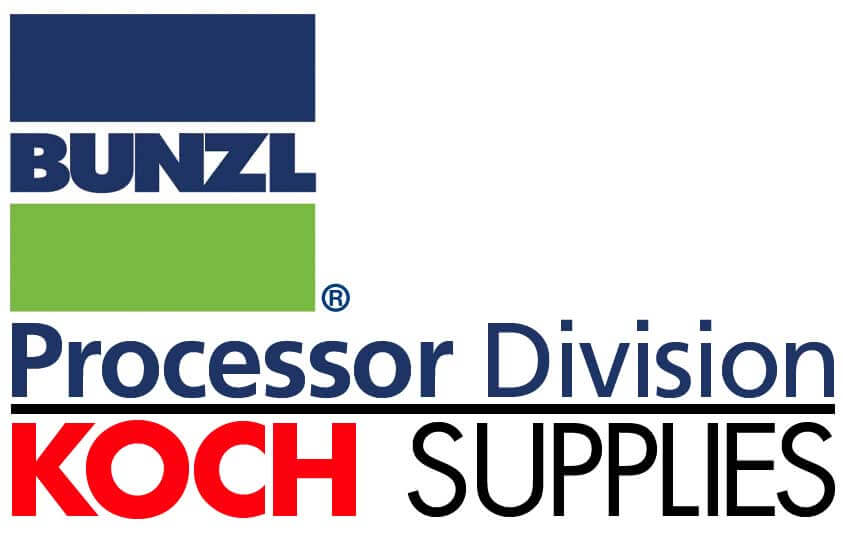
Cut-resistant gloves are an essential component of any meat processor’s personal protective equipment (PPE) due to the high-risk nature of meat processing. Chopping, cutting, slicing, and dicing meat products is a messy and slippery process that can quickly result in severe injuries if the butcher is not wearing proper PPE, especially on their hands.
What are Cut-Resistant Gloves?
Cut-resistant gloves are designed to protect hands against the risk of a cut injury from a knife or other sharp objects encountered in the workplace. They are commonly used in construction, recycling, and food processing industries, but one of the most essential industries that needs cut-resistant gloves for worker safety is meat processing.
“Cut-Resistant” vs. “Cut-Proof”
You won’t find any “cut-proof” gloves in Bunzl Processor Division’s (BPD) PPE stock. Why? They don’t exist! No glove is fully cut-proof. It’s part of our commitment to honesty and transparency. So instead, we use the term “cut-resistant.” Cut-resistant gloves are designed to reduce the chances of injury from cuts or abrasions, and different levels of cut-resistant gloves will provide more or less resistance.
When to Wear Cut-Resistant Gloves
Knowing when to wear cut-resistant gloves is important, and fortunately, also pretty common sense based! In safe meat processing, workers should wear cut-resistant gloves when they are processing meat using knives, shears, or other sharp tools. You can also determine the necessary times to wear cut-resistant gloves based on your hazard assessment, as there may be other hazards in the workplace where these gloves would provide needed protection.
When wearing cut-resistant gloves, we recommend always having one on the knife-wielding hand to protect it against possible injuries. You can also wear the second cut-resistant glove on your other hand, but the off-hand is actually at a higher risk of injury if the knife slips while cutting or boning and impacts the hand holding the meat product. The hand that isn’t wielding your knife would benefit from even greater protection with a metal mesh glove.
What to Look for in Cut-Resistant Gloves
There is a lot of variation among the cut-resistant gloves on the market, and some are better suited to lighter-risk environments like warehousing or general labor. Here are three things to consider when choosing the right cut-resistant gloves for your workplace safety needs:
Cut-Resistance Level
The most important way to determine whether a cut-resistant glove is right for your situation is by looking at the cut-resistance level. The American National Standards Institute (ANSI) has performed extensive tests on cut-resistant gloves to determine nine levels of resistance that consumers can use to determine whether a particular glove is right for them. The higher the ANSI cut-resistance level, the greater the cutting pressure a glove is resistant to.
In general, ANSI levels 1-3 are safe for light-risk environments (material handling, packaging, construction), levels 4-5 are safe for medium-risk environments (sheet metal handling, construction framing, manufacturing), and levels 6 and above are safe for high-risk use environments (glass manufacturing, recycling sorting, meat processing). The downside to a higher rating is that the glove is usually made of a thicker, sturdier material that while more cut-resistant is less flexible.
Material
Cut-resistant gloves come in a variety of durable materials, from fiberglass to Kevlar to the stainless steel used in a lot of metal mesh gloves. If the gloves are being used in a food-handling environment like meat processing, cut-resistant gloves should be made of an antimicrobial material that is FDA-approved and meets USDA food handling requirements.
Dexterity
The final piece to consider when looking for cut-resistant gloves is the comfort and dexterity. Employees are more likely to comply with wearing gloves that are comfortable and breathable enough to not leave their hands sweating and aching partway through the workday. Dexterity is of even greater importance, as a butcher needs to feel confident in their grip when using knives in meat processing. Gloves that are too smooth may contribute to slippage, and gloves that are too stiff may make it difficult for meat processors to have a strong enough grip.
Best Cut-Resistant Gloves for Meat Processing
As a butcher, your hands are the tools of your trade, and they deserve the best protection and care available! WorkHorse® Cut-Resistant Gloves are not only highly rated for various levels of cut resistance due to their unique high-performance fiber and stainless steel blend, but they are also machine washable and resistant to acids, alkali, and organic solvents. When it comes to cut-resistant gloves, there is no brand more trusted than WorkHorse®!
Our number one best seller at BPD is the WorkHorse® A610, which is ANSI level 6 rated for a perfect balance of flexibility, comfort, dexterity, and cut resistance. These gloves come in an extended cuff variety to provide additional protection on the wrist, and they’re ambidextrous so you can use them on either hand (Lefties will rejoice!). Just listen to one of our favorite reviews on these dependable hand protectors:
“I’ll say this right now, these gloves are a must-have! I got one a few years ago and it’s saved my fingers more than once... and probably a few times that I wasn’t unaware of.”
Get Equipped for Personal Protection with BPD
At BPD, we have everything meat processors need to safely and efficiently process their products. Whether you’re a butcher of a local mom-and-pop shop or one of hundreds of workers in a meat processing facility, take a look at our full selection of safety gear from cut-resistant gloves to high visibility apparel and more. Call us at 1-800-456-5624 if you have any questions




